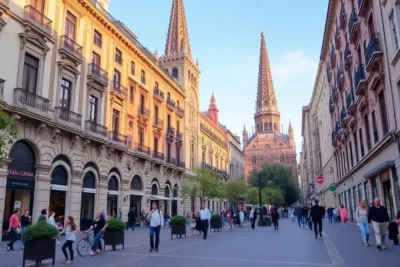
The Sagrada Familia, an iconic basilica located in Barcelona, Spain, is a testament to the genius of architect Antoni Gaudí. This extraordinary structure, characterized by its intricate facades and towering spires, has captivated visitors for over a century, symbolizing the city’s rich cultural heritage and architectural innovation.
As an unfinished masterpiece, The Sagrada Familia: 🏰🇪🇸 Antoni Gaudí's Masterpiece continues to evolve, drawing millions of tourists each year. Its unique blend of Gothic and Art Nouveau styles showcases Gaudí's visionary approach, leaving a lasting legacy that resonates with art and architecture enthusiasts worldwide.
The Architectural Significance of the Sagrada Familia in Antoni Gaudí's Vision
The architectural significance of The Sagrada Familia lies in its unparalleled synthesis of natural forms and innovative techniques. Antoni Gaudí's vision transcends traditional boundaries, as he sought to reflect the beauty of nature through architecture. His use of organic shapes and flowing lines creates a sense of harmony, making the basilica a living representation of the world around us. Gaudí’s pioneering approach emphasizes the importance of structural integrity and aesthetic beauty, merging them into a unified whole.
Moreover, the intricate detailing of The Sagrada Familia serves not only aesthetic purposes but also functional ones. Key architectural features include:
- Hyperboloid structures that enhance stability and light distribution.
- Natural lighting systems that illuminate the interior while creating a spiritual ambiance.
- Symbolic elements, such as the Passion and Nativity facades, which narrate biblical stories through sculptural artistry.
Gaudí's innovative use of materials is another hallmark of his design philosophy. By integrating diverse textures and colors into the façade, he creates a dynamic interplay of light and shadow that changes throughout the day. This approach not only challenges conventional architectural practices but also establishes a new language of form that speaks to the essence of Barcelona's identity.
In conclusion, The Sagrada Familia stands as a testament to Antoni Gaudí's visionary genius. Its architectural significance lies not just in its grandeur but also in how it reshapes our understanding of space and spirituality. Through the fusion of art and architecture, Gaudí invites us to experience the divine through the tangible, making this basilica a true masterpiece of modern architecture.
Exploring the Symbolism Behind the Sagrada Familia's Unique Design
Exploring the symbolism behind the Sagrada Familia's unique design reveals a profound narrative interwoven within its structure. Antoni Gaudí infused every element with spiritual meaning, aiming to reflect the divine through architectural innovation. For instance, the towering spires symbolize the connection between heaven and earth, each representing a different aspect of Christian faith, making the basilica a physical manifestation of his devotion.
The use of natural forms further enriches the basilica's symbolism. Gaudí believed that nature was the ultimate source of inspiration and sought to incorporate its beauty into his work. Some notable aspects include:
- Tree-like columns that support the basilica, resembling a forest canopy and evoking a sense of tranquility.
- Curvilinear shapes that mimic the organic lines found in nature, creating a seamless flow within the structure.
- Colorful stained glass windows that filter light in a way that changes throughout the day, representing the passage of time and the divine presence.
Moreover, the distinct facades serve as visual narratives of Christ's life, each telling a different story through intricate sculptures. The Nativity Facade focuses on the birth of Jesus, filled with joy and life, while the Passion Facade portrays the suffering and sacrifice, reflecting the duality of faith. Through these designs, Gaudí encourages contemplation and spiritual reflection, inviting visitors to engage with the deeper meanings behind each artistic choice.
In summary, the Sagrada Familia is not just an architectural marvel; it is a profound expression of spirituality and symbolism. Gaudí's ability to blend natural forms with religious motifs creates a unique experience for all who visit, making it a timeless masterpiece that resonates with both the faithful and the curious alike.
How the Sagrada Familia Reflects Gaudí's Innovative Use of Color and Light
Antoni Gaudí's innovative use of color and light in The Sagrada Familia is a reflection of his profound understanding of nature and spirituality. The interplay of vibrant colors, especially within the stained glass windows, creates a mesmerizing effect as natural light filters through. This dynamic environment transforms throughout the day, allowing visitors to experience a continuously changing atmosphere that enhances the basilica's spiritual essence.
Key aspects of Gaudí's approach to color and light include:
- Stained Glass Windows: Each window is designed to evoke specific emotions, with colors ranging from deep blues to vibrant reds, symbolizing different aspects of faith.
- Light Reflection: The varied textures of the walls and ceilings are crafted to reflect light, creating a dance of shadows and brightness that enriches the interior.
- Spiritual Ambiance: The combination of natural light and color creates an ethereal atmosphere, inviting contemplation and connection with the divine.
Furthermore, Gaudí's architectural choices enhance the effect of light within the basilica. The hyperboloid structures allow for larger openings that invite more sunlight, fostering an uplifting environment. This architectural ingenuity is complemented by:
| Element | Function |
|---|---|
| Column Design | Mimics tree trunks, supporting the ceiling while allowing light to pass through. |
| Facade Orientation | Strategically positioned to capture sunlight at different times, enhancing the visual experience. |
| Color Gradient | Designed to shift from cooler tones at the entrance to warmer tones towards the altar, symbolizing spiritual progression. |
In summary, the innovative use of color and light in The Sagrada Familia not only showcases Gaudí's artistic genius but also fosters a spiritual experience that engages visitors on multiple levels. His ability to harmonize architectural form with natural elements creates a unique, immersive environment that reflects the beauty of both faith and creativity.
The Construction History of the Sagrada Familia: A Testament to Time and Art
The construction history of The Sagrada Familia is as intricate as its design, marked by a blend of ambition and perseverance. The first stone was laid in 1882, with Antoni Gaudí taking over the project in 1883. His vision transformed the basilica into a monumental work of art, yet the project faced numerous challenges, including funding shortages and the onset of the Spanish Civil War, which halted progress for years. Despite these setbacks, the dedication to Gaudí's dream has continued, making the basilica a symbol of resilience and artistic dedication.
Over the decades, various architects and craftsmen have contributed to the ongoing construction, each aiming to honor Gaudí's original vision. The use of modern technology has accelerated the building process, allowing for the implementation of advanced techniques while still respecting traditional craftsmanship. Key milestones in this journey include:
- Completion of the Nativity Facade, which showcases the birth of Christ with vibrant sculptures.
- Advancements in structural engineering, such as the use of computer-aided design to ensure stability and aesthetics.
- Targeted completion date of 2026, marking the centenary of Gaudí's death, as a goal for the final touches.
Gaudí's original plans included a total of 18 towers, symbolizing the twelve apostles, the Virgin Mary, the four evangelists, and Jesus Christ. As the construction progresses, each tower that is completed stands as a testament to the project's evolving legacy, reflecting a blend of historical significance and contemporary architectural practices. The Sagrada Familia, thus, is not just a building; it is a living timeline of artistic innovation.
In conclusion, the construction history of The Sagrada Familia highlights the commitment of generations to bring Gaudí's vision to life. This ongoing journey not only celebrates architectural ingenuity but also reinforces the idea that great art and spirituality can withstand the test of time, making the basilica a beacon of inspiration for future artists and architects.
Visitor's Guide: What to See and Do at the Sagrada Familia in Barcelona
When visiting The Sagrada Familia, one of the first things to experience is the stunning Nativity Facade. This facade is a celebration of life and creation, richly adorned with sculptures depicting scenes from the birth of Christ. Make sure to take your time here, as each detail tells a story, providing a deep insight into Gaudí's religious inspiration and artistic vision.
Another must-see is the interior of the basilica, which features an impressive column system that resembles a forest. These tree-like columns not only support the structure but also create a sense of tranquility and connection to nature. As sunlight filters through the beautifully crafted stained glass windows, the play of light and color transforms the interior into a spiritual sanctuary, enhancing the overall experience for visitors.
For those interested in understanding Gaudí's vision more deeply, consider participating in a guided tour. These tours often include access to areas that are not open to the general public, providing a behind-the-scenes look at the ongoing construction efforts and the historical context of the basilica. Additionally, be sure to check out the museum located on-site, which chronicles the history and evolution of this incredible project, offering a comprehensive overview of Gaudí's work and the architectural techniques employed.
Finally, don't miss the chance to climb one of the towers for breathtaking views of Barcelona. The ascent provides a unique perspective of the basilica's intricate details and the surrounding cityscape. Whether you're an art enthusiast, a history buff, or simply a curious traveler, The Sagrada Familia promises to be an unforgettable experience that captures the essence of Barcelona’s rich architectural heritage.
Understanding the Religious Importance of the Sagrada Familia's Iconic Features
The Sagrada Familia's design intricately intertwines religious symbolism with architectural beauty, creating a sanctuary that invites spiritual contemplation. Each façade serves as a visual testament to Christian beliefs, encapsulating significant events in Christ's life. The Passion Facade, for example, starkly illustrates Christ's suffering, while the Nativity Facade celebrates his joyous birth, emphasizing the duality of the Christian faith.
Moreover, the basilica's towering spires represent not only an architectural feat but also a connection to the divine. The 18 towers are designed to symbolize various key figures in Christianity, including the Apostles and the Virgin Mary, thereby enhancing the structure's spiritual significance. This deliberate choice of form reinforces the idea that the Sagrada Familia is more than a building; it is a manifestation of faith and devotion.
In addition to its towering heights, the interior of the Sagrada Familia enhances its religious atmosphere through the use of natural light. The stained glass windows are designed to filter light in various hues, creating a kaleidoscope of colors that shifts with the sun's movement. This dynamic play of light represents the divine presence, encouraging visitors to reflect upon their own spiritual journeys in the serene environment.
Overall, understanding the religious importance of the Sagrada Familia's iconic features reveals how Gaudí ingeniously fused architecture with spirituality. The basilica stands as a living testament to faith, inviting people from all walks of life to experience its profound beauty and meaning. Through its intricate designs and symbolic elements, visitors are offered a glimpse into the heart of Christianity, making each visit a transformative experience.
En este sentido, te invitamos a ver el siguiente video que explora en profundidad la obra maestra de Antoni Gaudí, La Sagrada Familia, y su significado arquitectónico y cultural.

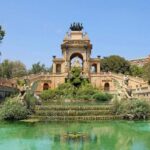 Discover the Best Free Attractions in Barcelona
Discover the Best Free Attractions in Barcelona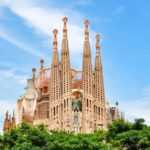 Sagrada Familia Barcelona Tickets: A Guide to Explore Gaudí's Masterpiece
Sagrada Familia Barcelona Tickets: A Guide to Explore Gaudí's Masterpiece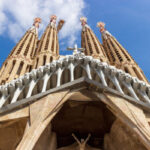 Exploring the Majestic Sagrada Familia in Barcelona: A Budget-Friendly Guide!
Exploring the Majestic Sagrada Familia in Barcelona: A Budget-Friendly Guide!If you want to know other articles similar to The Sagrada Familia: 🏰🇪🇸 Antoni Gaudí's Masterpiece you can visit the category WHERE YOU CAN GO FOR FREE.
Leave a Reply

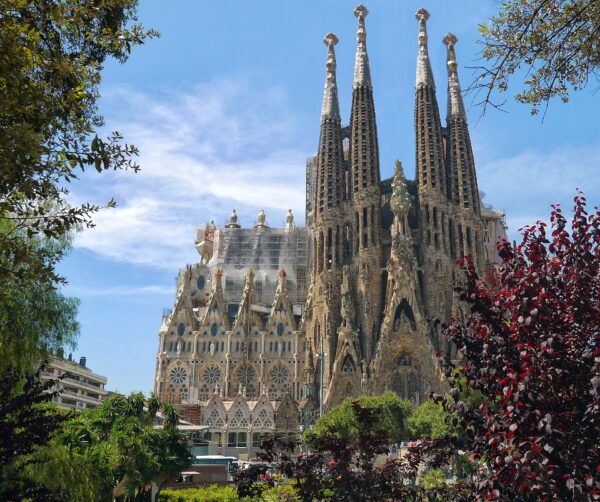
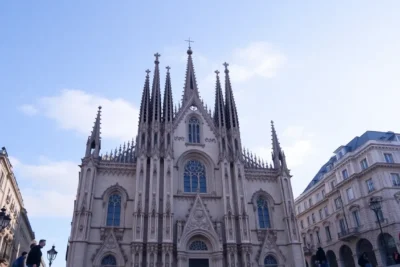
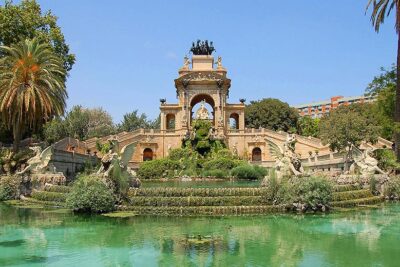
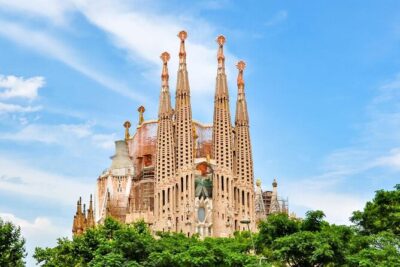
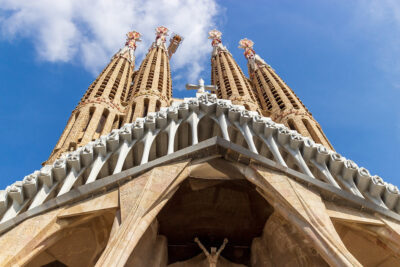
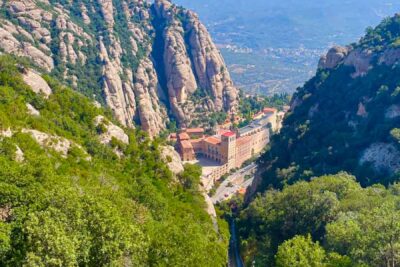
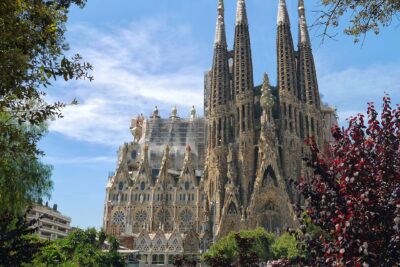
Read more!